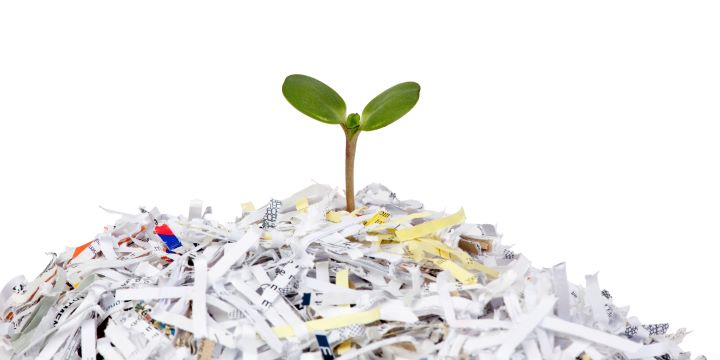Exploring the ins and outs of paper recycling is an educational journey and a crucial step toward ecological preservation. The average business generates substantial paper waste, from office printouts to packaging. Rather than being discarded, these materials can be reused through effective recycling programs, utilizing resources like recycling containers for business, vital tools in promoting sustainable practices. This informative piece delves into innovative techniques and strategies that enhance the longevity of paper products and reduce the footprint left in our natural world.
Table of Contents
- The Global Impact of Paper Waste
- Current Trends in Paper Recycling
- Challenges in Paper Recycling
- Steps to Effective Paper Recycling at Home
- Recycling Beyond the Blue Bin: Creative Uses for Recycled Paper
- Paper Recycling in Offices and Industries
- Government Policies and Incentives for Paper Recycling
- Technology and the Future of Paper Recycling
- How You Can Make a Difference: Getting Involved in Paper Recycling Efforts
Key Takeaways
- Understanding the environmental repercussions of paper waste is crucial for sustainable living.
- Innovative recycling technologies are making strides in improving the efficiency of paper recycling.
- Consumer awareness and governmental policies can significantly boost paper recycling rates.
The Global Impact of Paper Waste
Paper is a crucial commodity, but its creation and disposal are detrimental to our planet. Recycling paper, such as recycling containers for business, is mandatory and presents an opportunity for change. Every year, millions of tons of paper waste are produced, making it crucial to implement effective recycling practices.
Current Trends in Paper Recycling
Environmental awareness has illuminated the path towards sustainable practices, leading to the integration of advanced technology in paper recycling. These new technologies aim to overcome traditional barriers in the recycling process by improving material recovery and reducing contaminants. With cutting-edge optical sorting equipment, infra-red technology, and even robotics, there’s an overall enhancement in the quality and quantity of paper that can be reclaimed and reintroduced into the paper market. Such trends are fueled further by consumer shifts; as more individuals become conscious of their ecological footprint, they champion recycling efforts and demand more environmentally friendly products. This cycle of awareness and innovation establishes a critical foundation for ongoing advancements in the paper recycling industry.
Challenges in Paper Recycling
Recycling paper, while advantageous, has its challenges. Contamination remains one of the biggest obstacles, where non-recyclable elements like plastics or food residue mingle with recyclable paper, hindering recovery. Sorting these materials requires additional resources, which can be costly and time-consuming. The ever-shifting economics of recycled materials also presents a challenge, as recyclers must navigate a volatile market that affects the profitability and feasibility of recycling operations. Moreover, constantly changing recycling guidelines can create confusion for consumers and industry professionals, potentially leading to unintentional non-compliance and diminished efficiency in recycling programs.
Steps to Effective Paper Recycling at Home
Home-based recycling supports large-scale environmental goals and instills a sense of personal responsibility and eco-consciousness. It starts with proper sorting and recognizing that not all paper products are created equal in recyclability. For instance, corrugated cardboard has a different recycling process than newspaper or office paper. Ensuring you follow local guidelines and keep materials free from contaminants like food or plastic is critical. Moreover, educating oneself and family members on which items are recyclable and which are not can dramatically decrease the contamination rate and enhance the effectiveness of recycling efforts. By taking these steps seriously, every household can become a powerful ally in the battle against waste.
Recycling Beyond the Blue Bin: Creative Uses for Recycled Paper
While participation in curbside recycling is essential, the innovative reuse of recycled paper must often be noticed. Creative uses for recycled paper range from art projects to homemade compostable pots for planting. Local artisans and businesses are increasingly tapping into the resourcefulness of recycled paper, transforming it into new products and materials. This approach reduces the dependency on fresh resources and paves the way for sustainable community initiatives and entrepreneurship. Additionally, industries find inventive ways to incorporate recycled paper into eco-friendly packaging options and building materials, thereby fostering a circular economy where the lifecycle of paper continues indefinitely.
Paper Recycling in Offices and Industries
With companies being sizable contributors to paper waste, office settings, and industries must take the lead in proactive recycling. Many organizations have adopted green policies, setting up comprehensive recycling schemes, including bins for separate waste streams and education programs for staff. Sustainability-driven companies often incorporate recycled paper into their product lines or packaging. Real-world success stories abound, demonstrating that with concerted effort and company-wide commitment, business operations can become more environmentally responsible while potentially reducing overhead costs.
Government Policies and Incentives for Paper Recycling
The intersection of policy and environmental stewardship is where significant strides in paper recycling can be observed. Governments, recognizing the critical need to sustain natural resources, have introduced legislation that encourages and sometimes compels recycling. Policymakers can effectively influence public behavior and industrial practices through subsidies, tax incentives, and educational campaigns. These measures address the pressing necessity to reduce waste and conserve resources, forming the backbone of national recycling strategies and signifying a country’s commitment to sustainable development.
Technology and the Future of Paper Recycling
One must recognize the revolutionary role that technology plays in the future of paper recycling. With the adoption of advanced sorting systems, AI-powered processing, and innovative fiber recovery techniques, the recycling industry is on the brink of a transformative era driven by innovation. These advancements promise to refine the current capacities and redefine what is possible within the recycling sphere altogether. As researchers press on to resolve longstanding challenges within the industry, the robust ecosystem of recycling technology continues to flourish, enabling the reclaiming of paper products that would have otherwise been discarded irretrievably.
How You Can Make a Difference: Getting Involved in Paper Recycling Efforts
Marginalized no more, individual action stands as a formidable force in the quest for increased recycling rates. Each effort, from volunteering at local recycling centers to educating peers about proper waste management, contributes to a giant mosaic of environmental stewardship. Communities that unite under the banner of sustainability can affect change at municipal levels, driving improvements in waste services and influencing the creation of greener policies. Within this grassroots framework, each person’s role becomes pivotal reinforcing the idea that collective actions are instrumental in preserving our planet for future generations.





